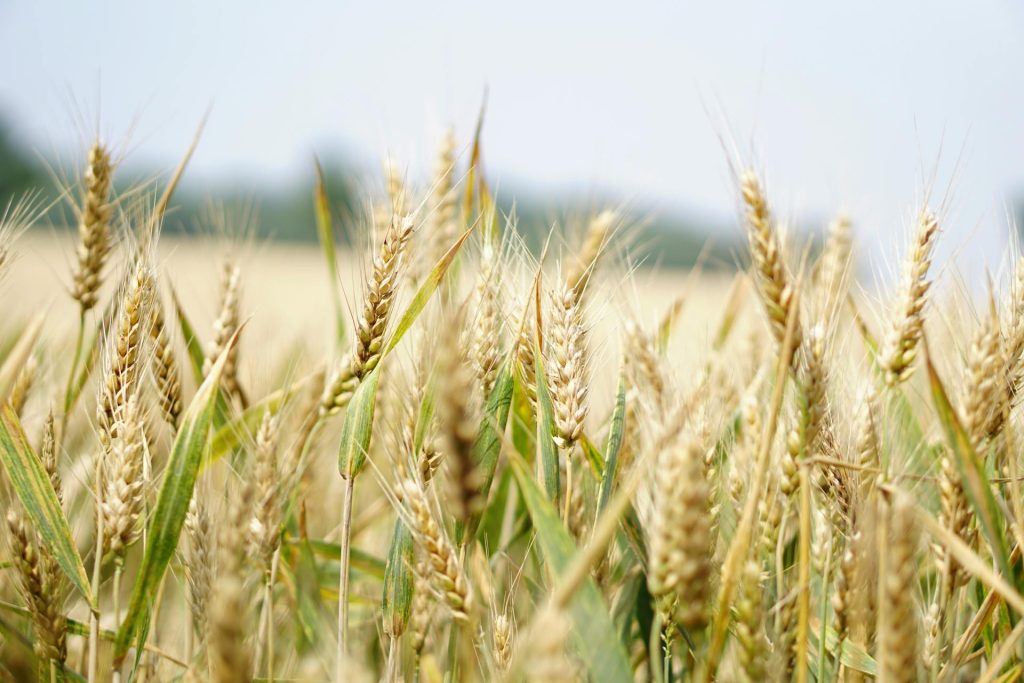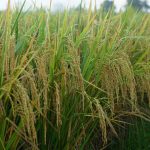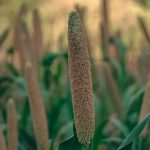Wheat is India’s second most important food crop after rice, with over 30 million hectares under cultivation. If you’re a beginner looking to start wheat farming, this easy-to-follow guide covers everything from soil preparation to harvesting and profit tips.
1. Choose the Right Wheat Variety
Select a variety based on climate, soil, and market demand:
| Variety | Best For | Maturity (Days) | Yield (Quintal/Ha) |
|---|---|---|---|
| HD 2967 | North India (Punjab, Haryana) | 120-125 | 50-55 |
| DBW 187 | High-protein, rainfed areas | 110-115 | 45-50 |
| Karan Vandana | Late sowing (UP, Bihar) | 100-105 | 40-45 |
| Sharbati (MP) | Premium quality (export) | 130-140 | 35-40 |
Pro Tip: Buy certified seeds from Krishi Vigyan Kendra’s (KVKs) or govt-approved dealers.
2. Prepare the Land
Best Soil: Well-drained loamy soil (pH 6-7.5).
Land Preparation Steps:
- Plough deeply (once with a mouldboard plough + twice with a harrow).
- Level the field (laser levelling improves water efficiency).
- Add organic manure (10-15 tonnes of compost/FYM per acre).
Avoid: Waterlogged or saline soils.
3. Sowing Time & Methods
Optimal Sowing Window:
- North India (Punjab, Haryana): Nov 1-15
- Central India (MP, UP): Nov 15-30
- Late Sowing (Bihar, Rajasthan): Dec 1-15
Sowing Methods:
- Broadcasting (Manual): Cheaper but less uniform.
- Seed Drill (Recommended): Ensures proper spacing (20-22 cm rows).
- Zero-Till Drill: Saves water & reduces costs (best for rice-wheat rotation).
Seed Rate: 100 kg/ha (for normal sowing), 125 kg/ha (late sowing).
4. Irrigation Management
Critical Irrigation Stages:
- First (Crown Root): 20-25 days after sowing (DAS).
- Second (Tillering): 40-45 DAS.
- Third (Flowering): 60-65 DAS.
- Fourth (Grain Filling): 80-85 DAS.
Water-Saving Tip: Use drip irrigation or Alternate Wetting & Drying (AWD) for 30% water savings.
5. Fertilizer Application
Recommended NPK Ratio: 120:60:40 kg/ha (adjust based on soil test).
- Basal Dose (At Sowing):
- DAP (18:46:0) – 150 kg/acre
- Urea (46% N) – 50 kg/acre
- Top Dressing (Tillering Stage):
- Urea – 100 kg/acre
Organic Alternative:
- Vermicompost (2-3 tonnes/acre) + Jeevamrit (500 L/acre).
6. Weed & Pest Control
Common Weeds: Wild oats, Chenopodium, Phalaris.
Solution:
- Herbicides (Pre-emergence): Pendimethalin (1 kg/ha).
- Manual Weeding: 30-35 DAS.
Major Pests/Diseases:
- Aphids, Termites, Rust, Karnal Bunt.
Solution: - Neem Oil (5%) for organic pest control.
- Fungicides (Tebuconazole) for rust.
7. Harvesting & Post-Harvest
When to Harvest?
- Optimal Stage: When grains are hard (20-25% moisture).
- Signs: Stems turn yellow, grains snap easily.
Harvesting Methods:
- Manual (Sickle): Small farms (<1 acre).
- Combine Harvester: Large farms (costs ₹2,000-3,000/acre).
Post-Harvest Tips:
- Dry grains to 12% moisture before storage.
- Use PICS bags to prevent pest damage.
8. Expected Yield & Profit Calculation
Average Yield: 40-50 quintals/acre (irrigated), 25-35 quintals/acre (rainfed).
Profit Estimate (Per Acre):
- Income (50 q @ ₹2,500/q): ₹1,25,000
- Cost (Seed, Fertilizer, Labor): ₹40,000-50,000
- Net Profit: ₹75,000-85,000
Maximize Profit By:
Selling to FCI, APMC mandis, or flour mills.
Growing Sharbati wheat (premium price: ₹3,000-4,000/q).
9. Government Subsidies & Support
Schemes for Wheat Farmers:
- PM-KISAN: ₹6,000/year direct benefit.
- Subsidy on Seeds: 50% for certified varieties.
- Rashtriya Krishi Vikas Yojana (RKVY): Funds for machinery.
10. Common Mistakes to Avoid
Late Sowing → Lowers yield by 20-30%.
Over-Irrigation → Causes lodging (stem bending).
Ignoring Soil Tests → Leads to nutrient imbalance.
FAQs
Q: Which wheat variety is best for beginners?
A: HD 2967 (high yield, disease-resistant).
Q: Can wheat grow in sandy soil?
A: Yes, but with extra organic manure & irrigation.
Q: How to get MSP for wheat?
A: Sell at FCI procurement centers (MSP 2024: ₹2,275/q).






